Discover 20 hidden attractions, cool sights, and unusual things to do in Winchester (United Kingdom). Don't miss out on these must-see attractions: Winchester Cathedral, Winchester Castle, and Royal Green Jackets Museum. Also, be sure to include Itchen Navigation in your itinerary.
Below, you can find the list of the most amazing places you should visit in Winchester (England).
Table of Contents
Winchester Cathedral
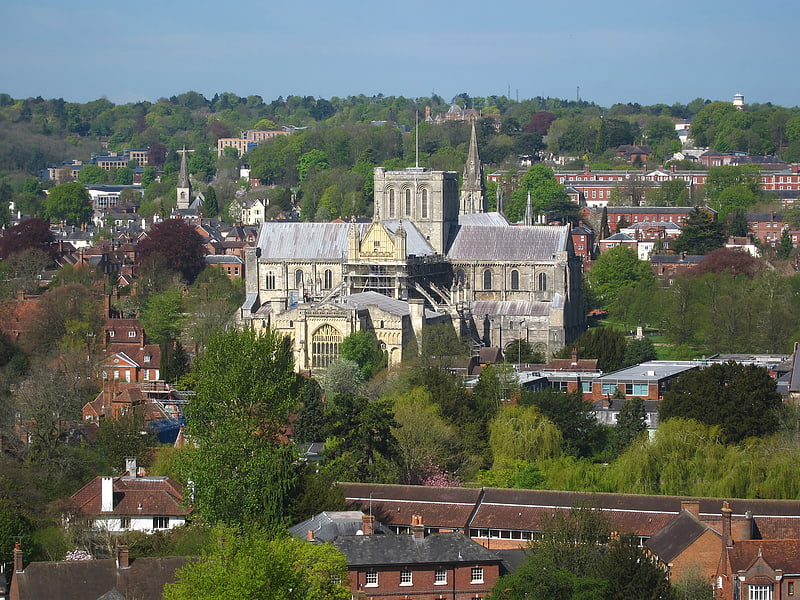
History-rich Medieval place of worship. The Cathedral Church of the Holy Trinity, Saint Peter, Saint Paul and Saint Swithun, commonly known as Winchester Cathedral, is the cathedral of the city of Winchester, England, and is amongst the largest of its kind in Northern Europe. The cathedral is the seat of the Bishop of Winchester and is the mother church for the ancient Diocese of Winchester. It is run by a dean and chapter, under the Dean of Winchester.
The cathedral as it stands today was built from 1079 to 1532 and is dedicated to numerous saints, most notably Swithun of Winchester. It has a very long and very wide nave in the Perpendicular Gothic style, an Early English retrochoir, and Norman transepts and tower. With an overall length of 558 feet (170 m), it is the longest medieval cathedral in the world, and only surpassed by the more recent churches of St Peter's Basilica in Rome, Basilica of Our Lady of Peace in Yamoussoukro, Liverpool Anglican Cathedral, Cathedral of St John the Divine in New York City and the Basilica of Our Lady in Aparecida. With an area of 53,480 square feet (4,968 m2), it is also the sixth-largest cathedral by area in the UK, surpassed only by Liverpool, St Paul's, York, Westminster (RC) and Lincoln.
A major tourist attraction, the cathedral attracted 365,000 visitors in 2019, an increase of 12,000 from 2018.[1]
Address: 9 The Cl, SO23 9LS Winchester
Winchester Castle
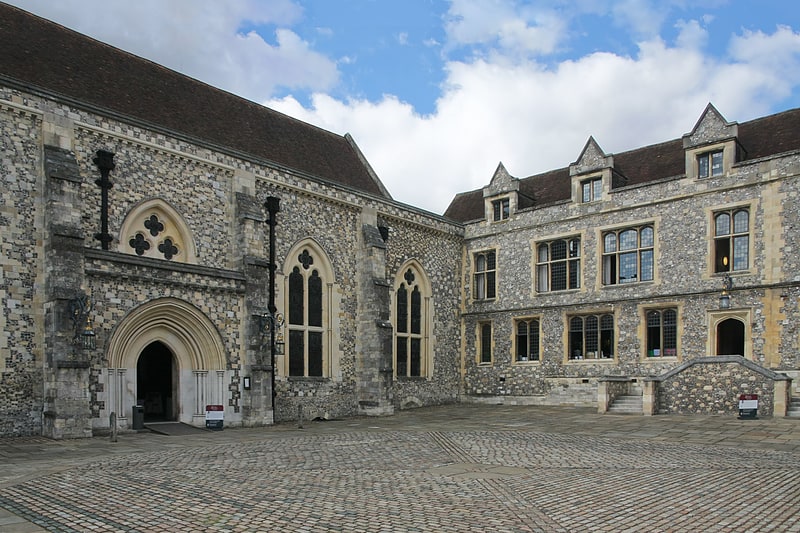
Building. Winchester Castle is a medieval building in Winchester, Hampshire, England. It was founded in 1067. Only the Great Hall still stands; it houses a museum of the history of Winchester.[2]
Address: The Castle Castle Avenue, SO23 8UJ Winchester
Royal Green Jackets Museum
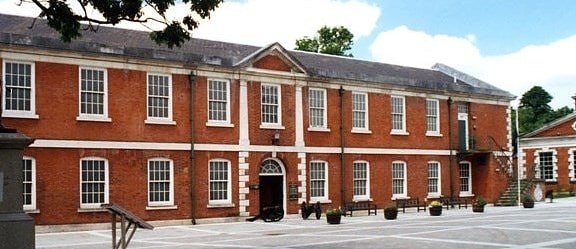
Museum in Winchester, England. The Royal Green Jackets Museum is situated at Peninsula Barracks in Winchester, England. The museum is one of several regimental museums that form part of Winchester's Military Museums.[3]
Address: Peninsula Barracks Romsey Road, SO23 8TS Winchester
Itchen Navigation

The Itchen Navigation is a 10.4-mile disused canal system in Hampshire, England, that provided an important trading route from Winchester to the sea at Southampton for about 150 years. Improvements to the River Itchen were authorised by Act of Parliament in 1665, but progress was slow, and the navigation was not declared complete until 1710. It was known as a navigation because it was essentially an improved river, with the main river channel being used for some sections, and cuts with locks used to bypass the difficult sections. Its waters are fed from the River Itchen. It provided an important method of moving goods, particularly agricultural produce and coal, between the two cities and the intervening villages.
On its completion it was capable of taking shallow barges of around 13 feet (4.0 m) in width and 70 feet (21 m) in length, but traffic was fairly modest. 18,310 tons of freight were carried in 1802, one of the better years, and there were never more than six boats in use on the waterway. Following the opening of the London and Southampton Railway in 1840, traffic declined sharply, and the navigation ceased to operate in 1869. There were various attempts to revitalise it, but none were successful. There had also been several proposals to link it to the Basingstoke Canal to form an inland route from London to Southampton during its life, which likewise did not come to fruition.
The revival of interest in inland waterways following the end of the Second World War has resulted in the tow path alongside the canal becoming part of the Itchen Way long-distance footpath, and is a popular route for walkers. The Itchen Navigation Preservation Society was formed in the 1970s, but progress was slow. A joint venture between the Environment Agency and the Hampshire and Isle of Wight Wildlife Trust in 2005 led to the formation of the Itchen Navigation Trust, and two years later, they obtained a grant from the Heritage Lottery Fund, funding the creation of the Itchen Navigation Heritage Trail Project, which has sought to conserve and interpret the remains. The route provides habitat for a diverse flora and fauna, which has resulted in it being designated as a European Special Area of Conservation and a Site of Special Scientific Interest.[4]
Wolvesey Castle
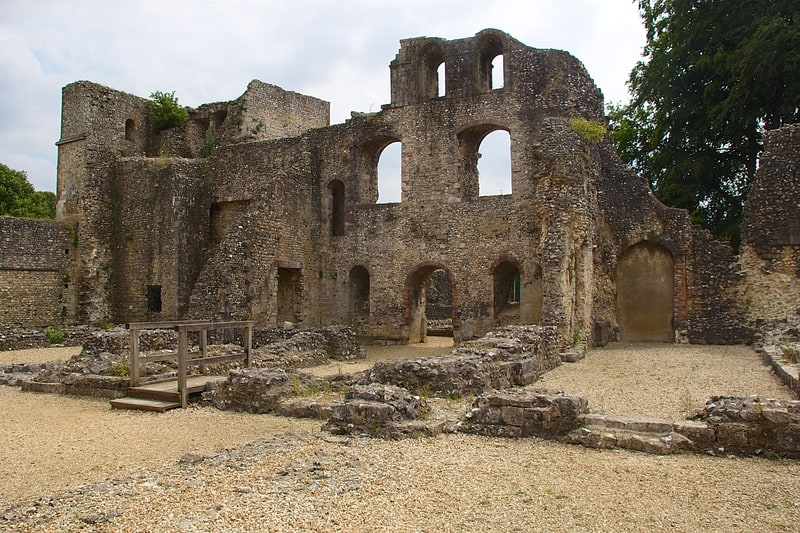
Castle in Winchester, England. Wolvesey Castle, also known as the "Old Bishop's Palace", is a ruined building in Winchester, Hampshire, England that was a bishop's palace, and was briefly fortified during the later years of Henry of Blois, the Bishop of Winchester. The first building on the site, an eyot in the River Itchen known as Wulveseye or Wulf's island, was constructed around 970 by Æthelwold of Winchester, the Bishop of Winchester from 963 to 984, as his official residence or palace. Winchester came under siege during the Rout of Winchester in 1141 by the Empress Matilda during the period of civil war known as The Anarchy, and held out for three weeks until relieved by Stephen's wife, Matilda. Subsequently Henry, the brother of Stephen, King of England, enlarged and fortified the palace by building a curtain wall, giving the palace the appearance of a castle. The fortifications were slighted by Henry II after the death of Henry in 1171.
The palace was the location of the wedding breakfast in 1554 of Queen Mary and Philip II of Spain. It was destroyed by the Roundheads during the English Civil War in 1646. The ruins are located next to the existing bishop's palace, near to Winchester Cathedral, and are currently owned and maintained by English Heritage.[5]
Address: Wolvesey Castle College Street, SO23 9NB Winchester
The Gurkha Museum
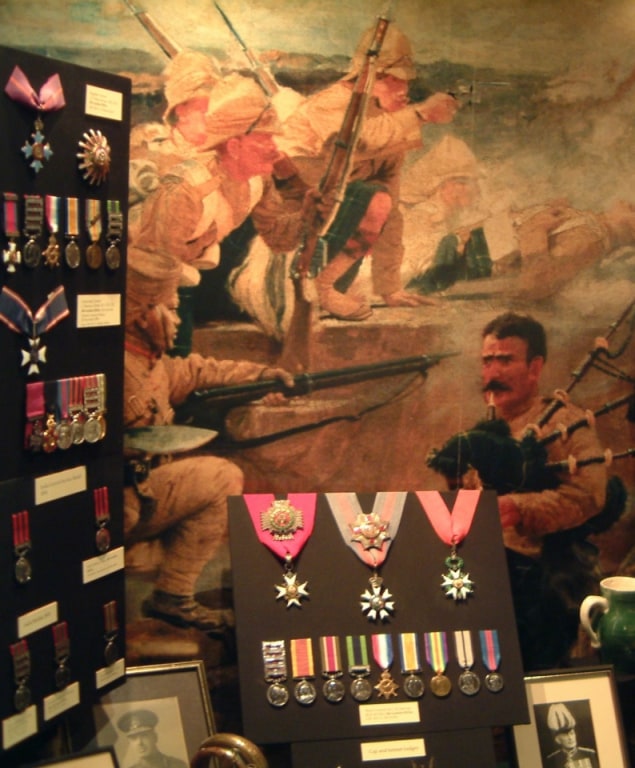
Museum in Winchester, England. The Gurkha Museum commemorates the service of Gurkha soldiers to the British Crown, a relationship that has endured since 1815. It is located in Winchester in Hampshire, England and is part of Winchester's Military Museums.[6]
Address: Peninsula Barracks Romsey Road, SO23 8TP Winchester
Kingsgate
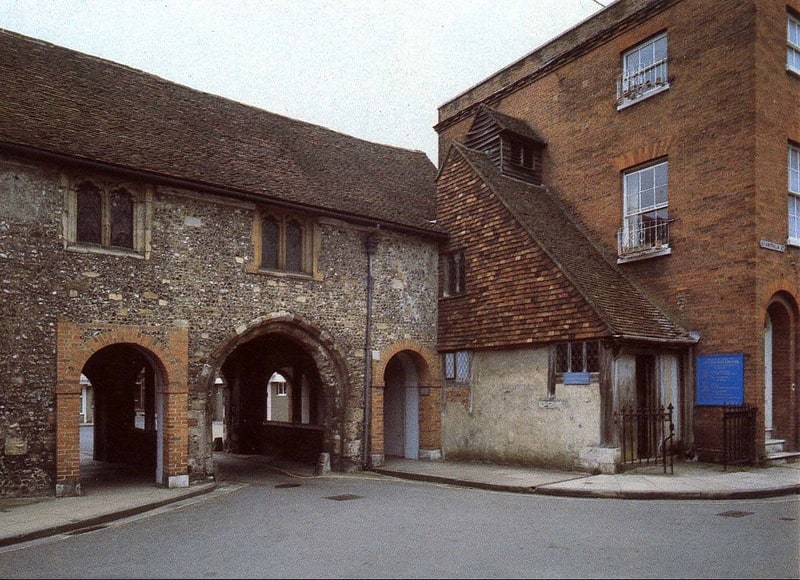
Historical place in Winchester, England. Kingsgate is one of two surviving medieval gates to the city of Winchester, England. The name was first recorded in 1148. The gate is on, or near, the site of one of the Roman gates to the city, and was the entrance to the royal palace before the Cathedral Close was enclosed in the 10th century. The present gate is probably 14th century, with 18th-century pedestrian walkways.
Above the gate is the small church of St Swithun-upon-Kingsgate. St Swithun was built in the Middle Ages in the Early English style, and is unusual in forming a part of the fabric of the old city walls. It first appears in thirteenth century records and achieved some literary fame, under the fictional name of St Cuthbert's, in Anthony Trollope's novel The Warden.
Kingsgate is a scheduled monument (St Swithun's Church is a Grade I listed building).[7]
Address: 2-4 Kingsgate St, Winchester
Winchester Guildhall
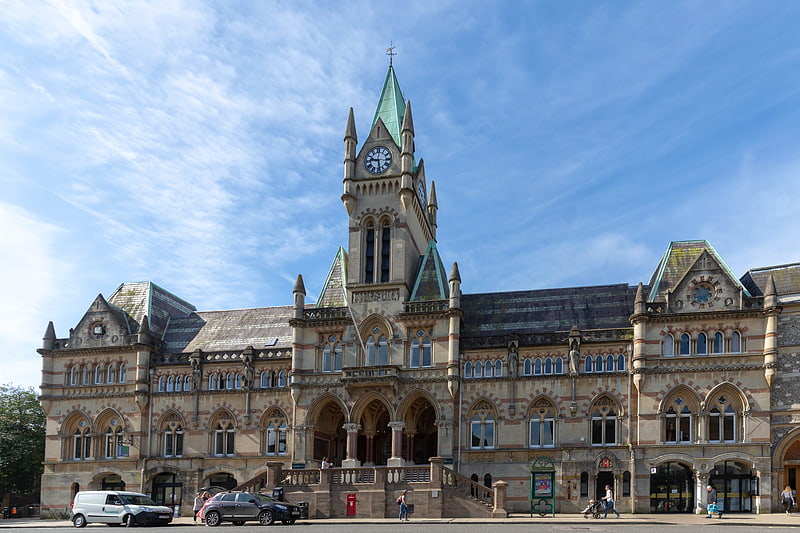
Winchester Guildhall is a municipal building in the High Street, Winchester, Hampshire. It is a Grade II listed building.[8]
Address: The Broadway, SO23 9GH Winchester
Chesil Theatre
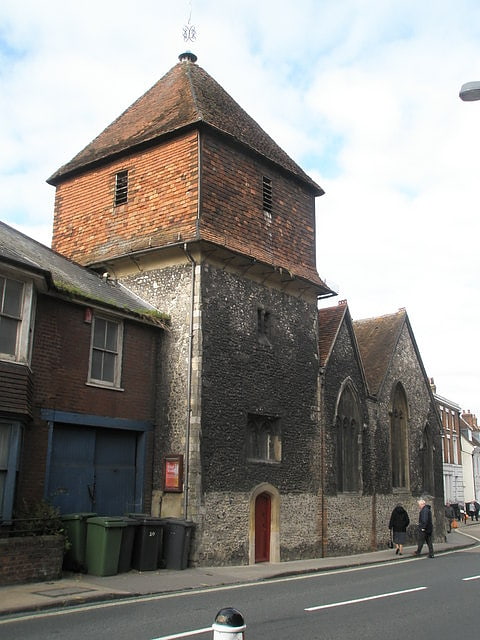
St Peter's Church, Chesil, Winchester, formerly known as St Peter upon Chesille without Eastgate, is a former parish church of the Church of England in Winchester, Hampshire, and is now the home of Chesil Theatre.
The church comprises elements from the 12th century and later. It is constructed of flint and stone, and the belfry turret, and roofs are hung with tiles.
It fell out of use after the Second World War and was declared structurally unsafe in 1960. It was then acquired by the Chesil Theatre company.[9]
Address: Chesil Street, Winchester
Winchester City Mill

Mill in Winchester, England. The Winchester City Mill is a restored water mill situated on the River Itchen in the centre of the ancient English city of Winchester. The mill is owned by the National Trust and is a Grade II* listed building.[10]
Address: Bridge Street, SO23 0EJ Winchester
Winnall Moors
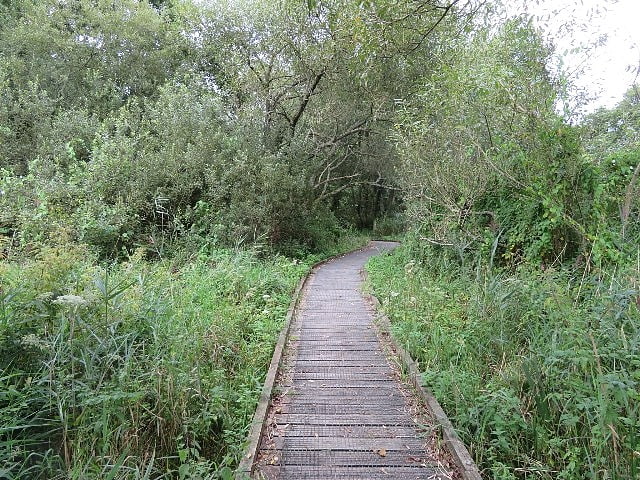
Winnall Moors is a 64-hectare nature reserve in Winchester in Hampshire. It is managed by the Hampshire and Isle of Wight Wildlife Trust.
The southern section is owned by Winchester City Council and has been managed by HIWWT since the 1980s. The northern part was formerly farmed as low-intensity grazing, but was purchased by HIWWT following a public appeal, with assistance from the Heritage Lottery Fund.
The site lies within the western end of the Countryside Agency's plan for a South Downs National Park.[11]
Westgate
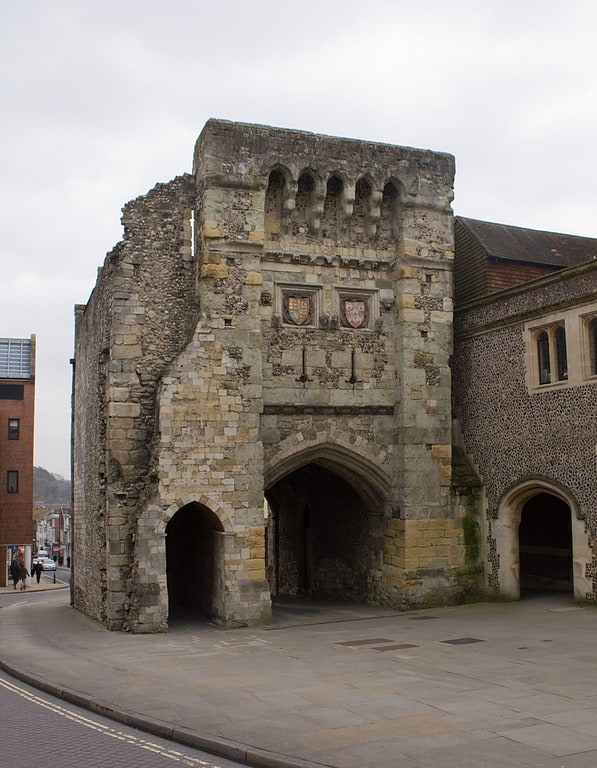
The Westgate is one of two surviving fortified gateways in Winchester, England formerly part of Winchester City Walls. The earliest surviving fabric is of Anglo-Saxon character. The gate was rebuilt in the 12th century and modified in the 13th and late 14th centuries, the latter including a portcullis in the western façade and two inverted-keyhole gunports, the earliest in the country. The gate was in use until 1959 when the High Street was routed around it.
In the 19th century the City Corporation (now Winchester City Council) acquired the Westgate and began to use it as a museum and repository for the City archives. In 2014, ownership of the museum space was transferred to Hampshire Cultural Trust. Today, the Westgate Museum's displays include a famous collection of pre-Imperial weights and measures, and a fine painted ceiling made for Winchester College in anticipation of a visit by Mary Tudor and Philip of Spain on the occasion of their marriage in Winchester in 1554.[12]
Address: 2 Romsey Rd, SO23 8TP Winchester
Winchester city walls
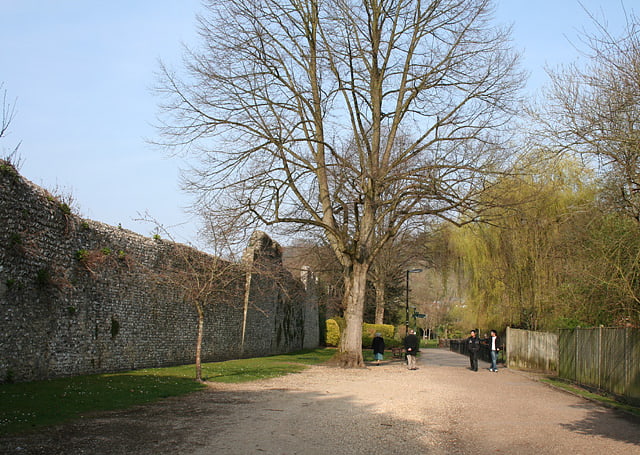
Winchester city walls are a series of defensive walls in central Winchester, originally built during the Roman settlement of southern Britain, in what was then the settlement of Venta Belgarum. The area surrounding Winchester had been populated throughout the Iron Age, with Britonnic settlements existing at Oram's Arbour, St Catherine's Hill, and Worthy Down; Venta Belgarum took its name from the Belgae tribes of the area. Earthwork defences were constructed around the end of the second century, being rebuilt in stone during the latter part of the third century..
Under Saxon rule, Alfred the Great rebuilt Winchester and its defences as part of the burh system developed to protect against Norse incursions. Winchester was later chosen as the location of one of the first Norman castles in England, with Winchester Castle being built alongside the walls in 1067. As well as the royal castle in the West of the city, Wolvesey Castle, the palace of the Bishop of Winchester, was built in the East of the City alongside the River Itchen; during the Civil War known as The Anarchy, the forces of Queen Matilda, on behalf of King Stephen, besieged the forces of Empress Matilda, destroying much of the old city including the urban defences, in an event known as the Rout of Winchester.
Whilst Winchester's city walls went through periods of decline, by the 14th century, the city had 6 gates, the West Gate, South Gate, King's Gate, East Gate, North Gate and Durn Gate. In the English Civil War, the city was seized on behalf of the King by royalist Sir William Ogle, before being captured by Parliamentary forces led by Sir William Waller; the city was subsequently recovered by the Royalist forces before being recaptured by Parliament after the Battle of Cheriton, after which much of the castle was demolished, apart from the Great Hall.
During the 18th century, much of the walls and gates were demolished due to the relatively low height of the gates and their hazards to pedestrians, with the Eastgate demolished in 1768, and the Southgate demolished from 1771. The Northgate also collapsed in 1756. Today only the Kingsgate and Westgate survive, with other portions of the wall existing around the gates and Winchester Castle, as well as alongside the Itchen by the remains of Wolvesey Castle, with other sections having been demolished or repurposed. Sections of the wall remain as listed and protected areas.[13]
Avington Park
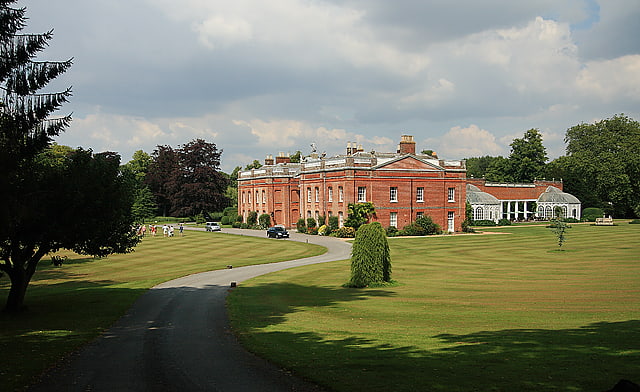
Wedding venue in Avington, England. Avington House is a 16th-century English country house which stands in Avington Park in the Itchen Valley near Winchester, Hampshire. It is a Grade I listed building.
Originally a late 16th-century half-H house built by John Clerk it was substantially rebuilt in the 17th century by George William Brydges, who added the service courtyard and banqueting hall. It was then refronted in the late 18th century by James Brydges, 3rd Duke of Chandos. In 1848 Sir John Shelley added a conservatory.
The building is now constructed of brick and blue with slate and lead roofs. The half-H main block is in two storeys with a 13-bay frontage, of which the central 5 bays are recessed.[14]
Address: Avington Park, Winchester
St Swithun-upon-Kingsgate Church
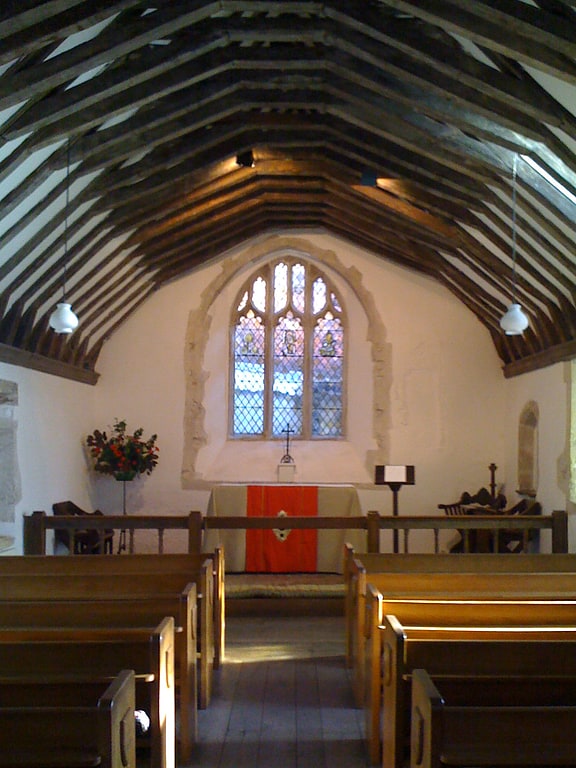
Anglican church in Winchester, England. St Swithun upon Kingsgate is a Church of England church in Winchester, Hampshire, England, built in the Middle Ages in the Early English style. Located above the medieval Kingsgate, one of the principal entrances to the city, the church is unusual in forming a part of the fabric of the old city walls. St Swithun's first appears in 13th century records, and under the fictional name of St Cuthbert's, is mentioned in Anthony Trollope's novel The Warden.[15]
Address: St Swithun St, SO23 9JP Winchester
The Rifles Museum
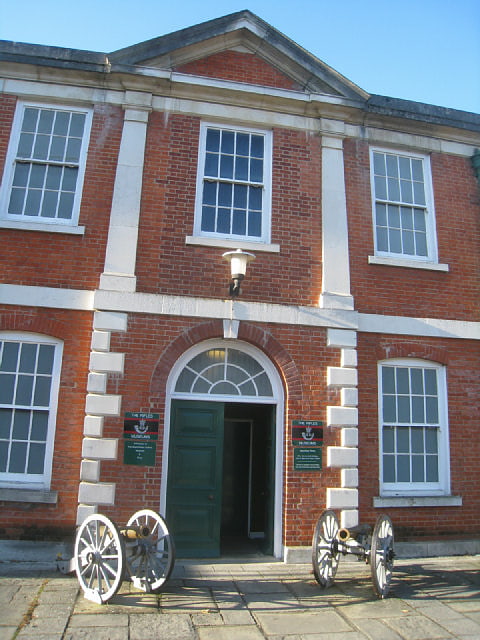
Museum in Winchester, England. The Rifles Museum is the regimental museum of The Rifles. It is located in Winchester in Hampshire, England and is part of Winchester's Military Museums.[16]
HorsePower: The Museum of the King's Royal Hussars
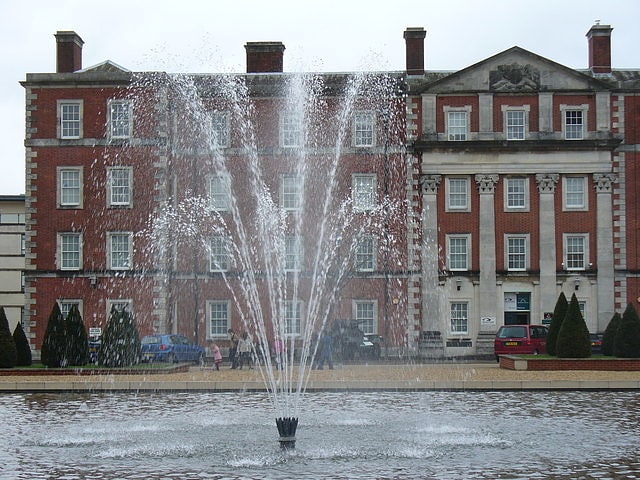
Museum in Winchester, England. HorsePower: The Museum of the King's Royal Hussars is a military museum in Winchester, Hampshire, that is dedicated to documenting the King's Royal Hussars, a cavalry regiment of the British Army. The museum is one of the founding members of Winchester's Military Museums, a partnership of six museums located in the Peninsula Barracks, Winchester. The museum contains exhibits spanning three centuries of two of the Royal Hussar regiments; the 10th Royal Hussars and the 11th Royal Hussars, as well as the Royal Hussars, which became The King's Royal Hussars in 1992.[17]
Address: Peninsula Barracks Romsey Road, SO23 8TS Winchester
St Bartholomew's Church
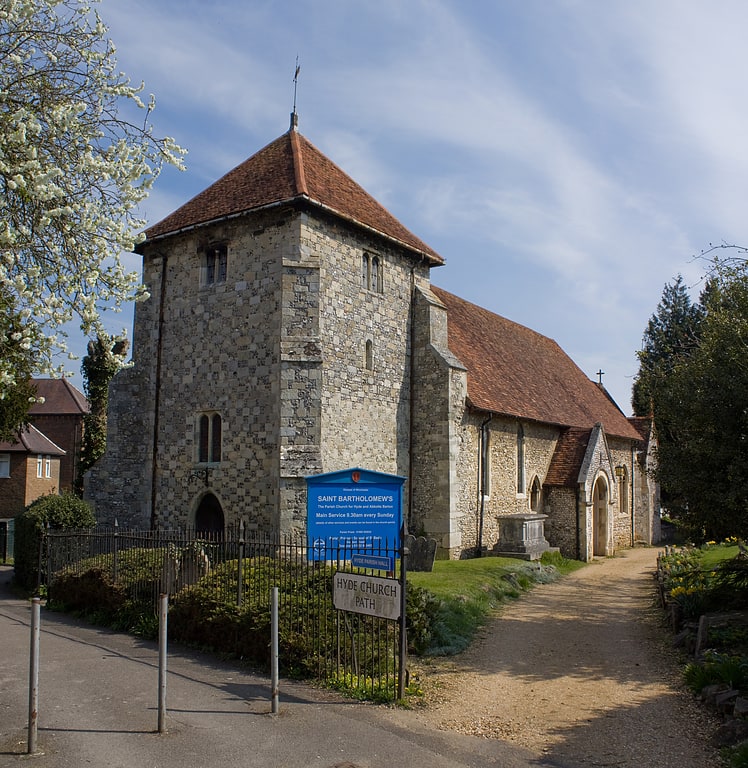
Church in Winchester, England. St Bartholomew's Church, Winchester is a Church of England parish church in Hyde, Winchester, England.
St Bartholomew's is the parish church of Hyde, formerly a village outside the walls of Winchester, now a suburb of the city. The church was built to serve the tenants and lay officials of Hyde Abbey. The tower was built in 1541 using stones from the abbey; the chancel was rebuilt and the rest of the church restored in the 19th century.
The church is a Grade II* listed building.
For more details, times of services and opening times, please see the website.[18]
Address: 1 King Alfred Pl, SO23 7DF Winchester
Holy Trinity Church

Church in Winchester, England. Holy Trinity Church, Winchester is a Church of England parish church in Winchester, England.[19]
Address: Upper Brook St, SO23 8DG Winchester
St Thomas Church
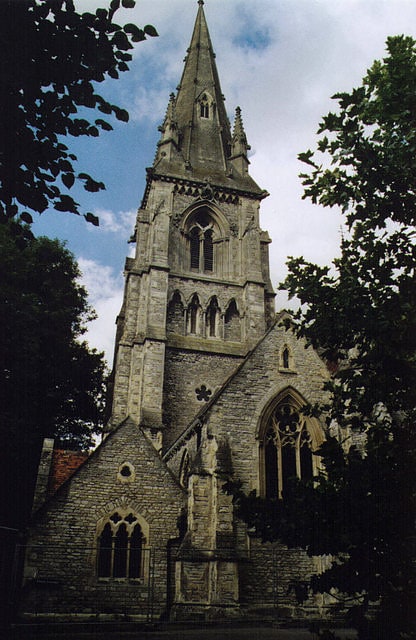
Building in Winchester, England. St Thomas Church is a disused Church of England parish church in Winchester, England.
An earlier St Thomas Church was in St Thomas Street. It was demolished in 1845 and replaced by the present church, about 100m away in Southgate Street.
Nikolaus Pevsner remarked that it is the most ambitious Victorian church in Winchester, and it is remarkable that it should be so early; for it is ‘archaeological’, i.e. no longer uninformed in its Gothic motifs and their handling.
The new church joined the parishes of St Thomas and St Clement and contained around 2,500 souls. The new church was consecrated on 16 April 1847 by the Bishop of Winchester.
This church closed in 1969 and for a while housed the Hampshire Record Office. At that time it was listed Grade II and remains on the statutory List of Buildings of Special Architectural or Historic Interest with the name of Hampshire Record Office. The Record Office moved to a new building and the church, called the St Thomas Centre, was used as charity offices until about 2010. It is now in the process of being converted into housing, with nine flats and properties being created inside the building.[20]